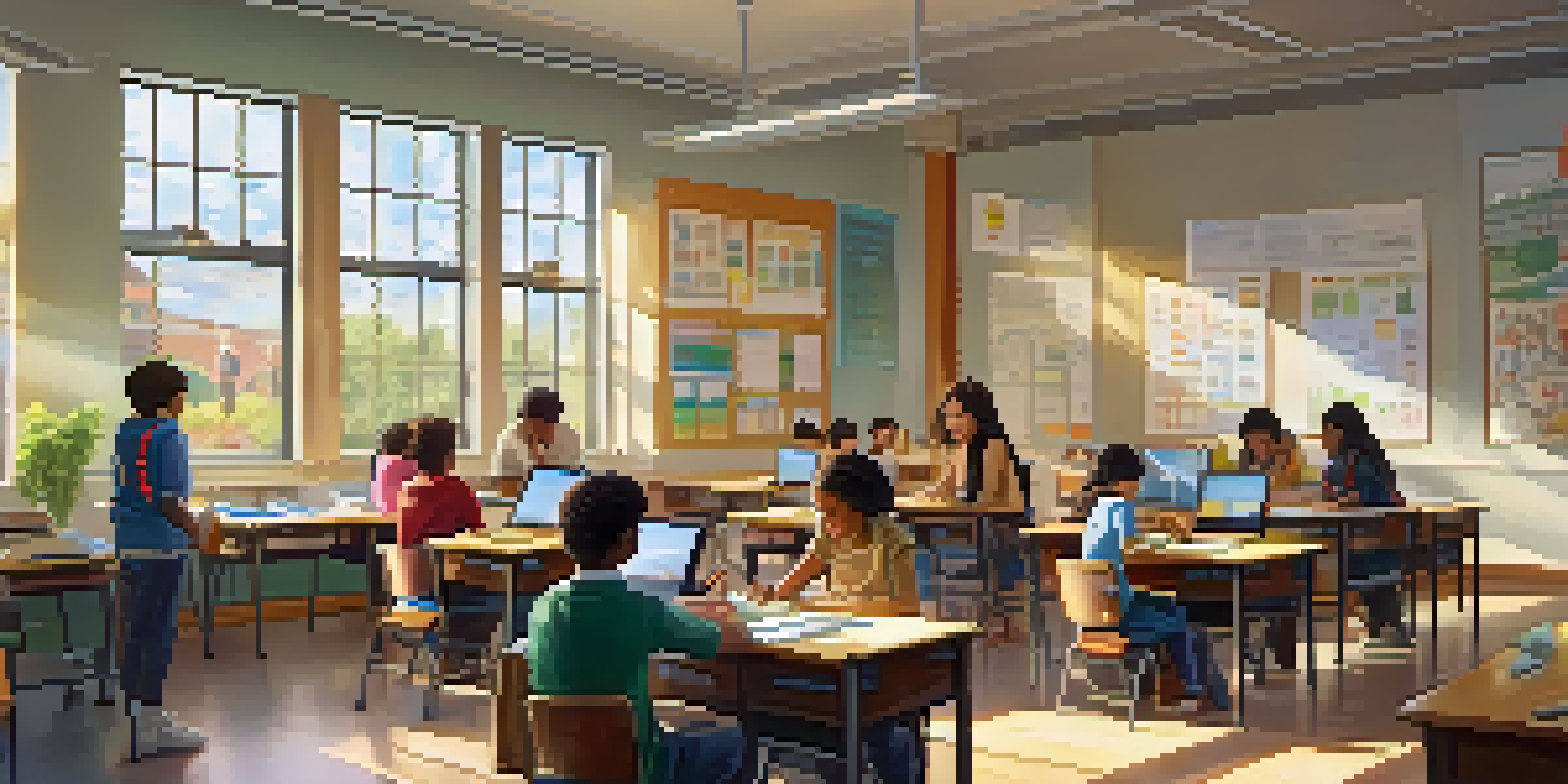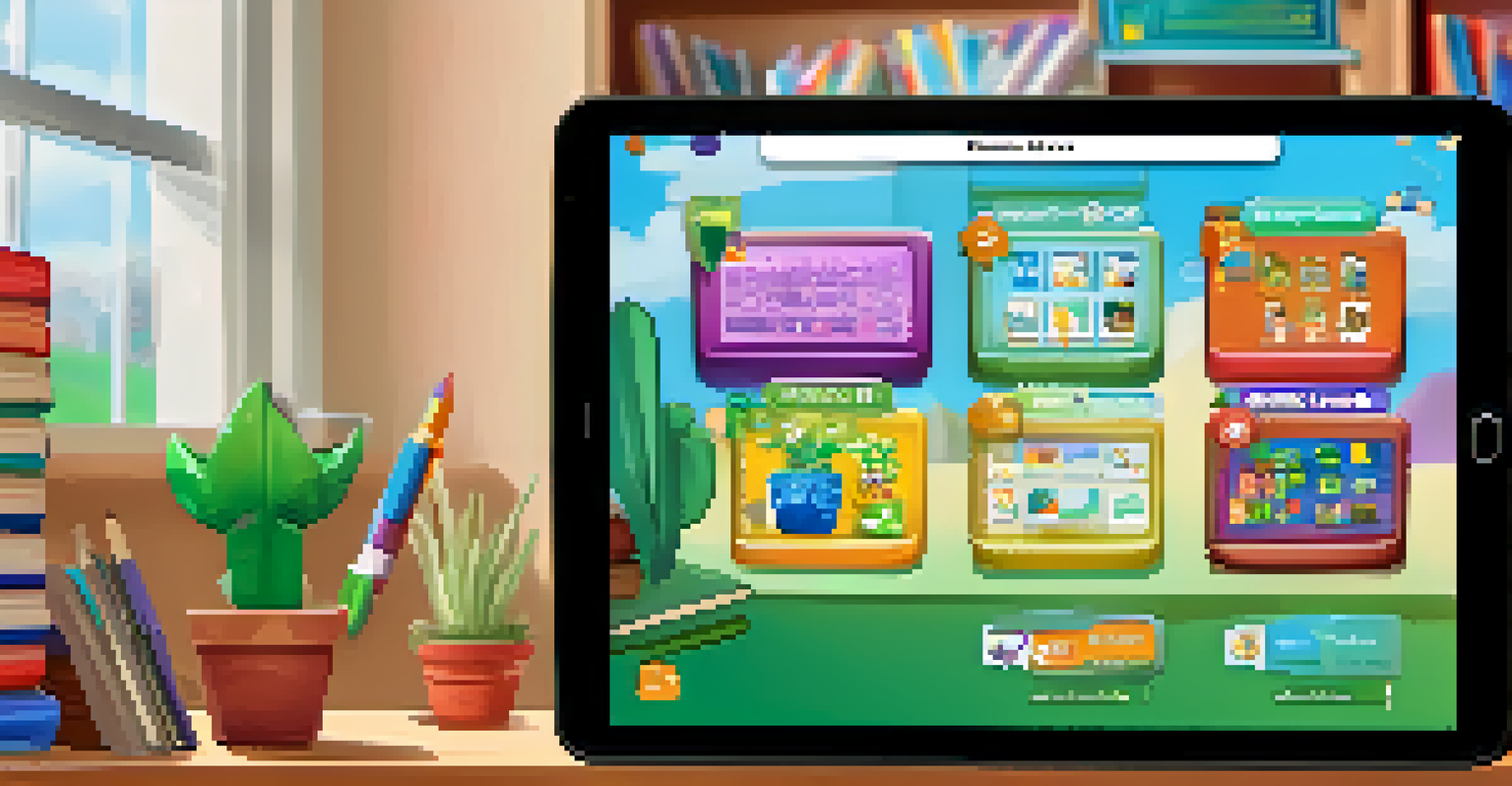Understanding Behaviorist Learning Theory in Education Today

Defining Behaviorist Learning Theory: A Simple Overview
Behaviorist learning theory focuses on observable behaviors rather than internal thoughts or feelings. It suggests that all behaviors are acquired through conditioning, which can be either classical or operant. In simpler terms, this means that learning is a response to external stimuli, much like how a dog learns to sit for a treat. Understanding this can help educators design more effective teaching strategies by emphasizing reinforcement and practice.
Behavior is shaped by its consequences.
The theory was primarily developed by psychologists like B.F. Skinner and John Watson, who believed that the environment plays a crucial role in shaping behavior. For example, if a student receives praise for completing homework, they’re more likely to repeat that behavior. This concept of reinforcement is at the heart of behaviorist theory, making it a powerful tool in educational settings.
In today's classrooms, behaviorist principles are often used to manage classroom behavior and enhance learning outcomes. By utilizing positive reinforcement, such as rewards or recognition, teachers can motivate students to engage more actively in their education. This approach creates a structured environment where students can thrive through consistent feedback and encouragement.
The Role of Reinforcement in Learning
Reinforcement, a key concept in behaviorist theory, can be understood as any stimulus that strengthens or increases the likelihood of a particular behavior. There are two main types: positive reinforcement, which adds a pleasant outcome, and negative reinforcement, which removes an unpleasant one. For instance, giving a student extra playtime for completing their work is positive reinforcement, while allowing a break from a difficult task can be seen as negative reinforcement.

In classrooms, effective reinforcement strategies can significantly boost student motivation and engagement. When students know that their efforts will be recognized and rewarded, they are more likely to participate actively. This not only fosters a positive learning environment but also encourages them to take ownership of their learning journey.
Behaviorism Emphasizes Observable Actions
Behaviorist learning theory focuses on observable behaviors and the role of external stimuli in shaping learning through conditioning.
However, it's important to note that reinforcement should be applied thoughtfully. Over-reliance on rewards can lead to students expecting incentives for every task. Educators must find a balance, ensuring that intrinsic motivation—where students learn for the joy of learning—coexists with external reinforcement, creating a well-rounded educational experience.
Behaviorism and Classroom Management Techniques
Behaviorist principles are often at the forefront of effective classroom management strategies. By establishing clear expectations and consequences, teachers can create an environment conducive to learning. For instance, implementing a system where students earn points for good behavior can lead to a more orderly classroom, as students understand the direct link between their actions and outcomes.
The environment is the primary influence on behavior.
Moreover, behaviorist strategies can help teachers address disruptive behavior proactively. By recognizing the triggers of certain behaviors and implementing specific interventions, teachers can guide students toward more positive actions. This approach not only minimizes disruptions but also promotes a sense of responsibility among students for their actions.
Ultimately, a well-managed classroom allows for more focused instruction and learning opportunities. When students feel secure in their environment, they are more likely to engage fully in the learning process, benefiting from the structured approach that behaviorist theory provides.
The Impact of Technology on Behaviorist Learning
In today's digital age, technology plays a vital role in reinforcing behaviorist principles. Online platforms and educational software often incorporate gamification elements, providing instant feedback and rewards that align perfectly with behaviorist learning theory. For example, educational games that reward students with points or badges for completing tasks can significantly enhance motivation.
Additionally, technology allows for personalized learning experiences, where students can progress at their own pace. This customization means that teachers can implement behaviorist strategies more effectively, adjusting reinforcements based on individual student needs. Students can receive immediate reinforcement through digital platforms, making learning more engaging and tailored.
Reinforcement Boosts Student Engagement
Effective use of positive and negative reinforcement in classrooms can significantly enhance student motivation and participation.
However, it’s essential to ensure that technology enhances rather than detracts from the learning experience. While digital tools can provide valuable reinforcement opportunities, educators must remain mindful of balancing screen time with traditional learning methods to foster a comprehensive educational environment.
Critiques of Behaviorist Learning Theory
Despite its numerous applications, behaviorist learning theory has faced criticism over the years. One major critique is that it overlooks the mental processes involved in learning, focusing solely on observable behaviors. Critics argue that this narrow view can lead to a lack of understanding about how students think and feel, potentially stifling creativity and critical thinking.
Furthermore, some educators believe that an overemphasis on external reinforcement can undermine intrinsic motivation. When students are conditioned to expect rewards for tasks, they may lose interest in learning for its own sake. This concern raises important questions about the long-term implications of behaviorist strategies in fostering genuine curiosity and love for learning.
In response to these critiques, many educators advocate for a blended approach that incorporates elements of behaviorism while also addressing cognitive and emotional aspects of learning. By combining different educational theories, teachers can create a more holistic learning experience that nurtures both behavior and internal motivation.
Integrating Behaviorism with Other Learning Theories
To create a well-rounded educational approach, it’s important to integrate behaviorist principles with other learning theories, such as constructivism and cognitivism. While behaviorism emphasizes observable behavior, constructivism focuses on how students actively construct knowledge through experiences. By blending these philosophies, educators can provide a richer learning environment that caters to different learning styles.
For instance, teachers can use behaviorist techniques to establish routines and expectations while also encouraging students to explore concepts through hands-on projects. This combination allows students to engage with material actively while benefiting from the structure provided by behaviorist strategies. Such an approach not only enhances comprehension but also fosters critical thinking skills.
Integrating Theories for Holistic Learning
Combining behaviorism with other learning theories, like constructivism, creates a richer educational experience that fosters both structure and creativity.
Ultimately, the goal is to create an educational experience that is both effective and enjoyable. By harmonizing behaviorist methods with other learning theories, educators can cultivate a classroom atmosphere that not only promotes discipline and structure but also inspires creativity and intellectual curiosity.
The Future of Behaviorist Learning in Education
As education continues to evolve, the relevance of behaviorist learning theory remains significant. With an increasing emphasis on data-driven decision-making in education, behaviorism's focus on measurable outcomes aligns perfectly with the current trend. Educators can utilize behaviorist principles to track student progress and adjust teaching methods based on observable data.
In addition, the rise of personalized learning experiences allows educators to apply behaviorist strategies in more targeted ways. By understanding individual student behaviors and adapting reinforcements accordingly, teachers can create tailored learning paths that maximize student engagement and success. This adaptability is crucial in today’s diverse classrooms.

Looking ahead, the challenge will be to ensure that behaviorist methods are used thoughtfully, balancing them with other educational philosophies to promote holistic learning. By embracing a variety of approaches, educators can better prepare students for a future that requires not only knowledge but also creativity, critical thinking, and adaptability.